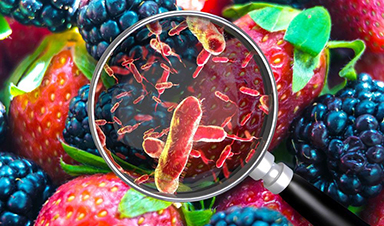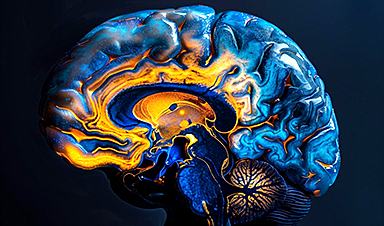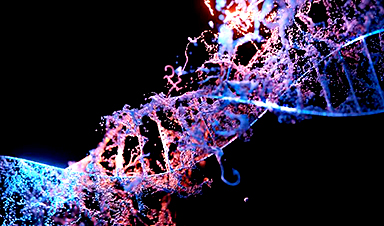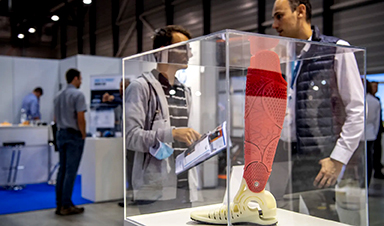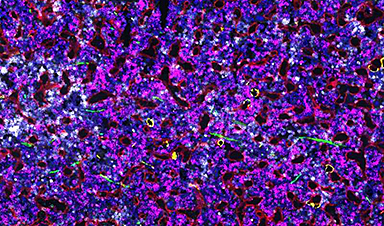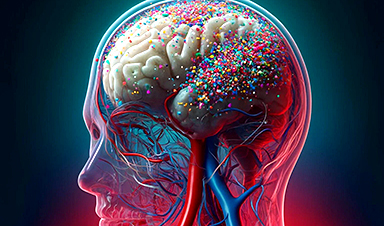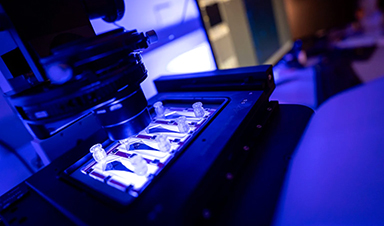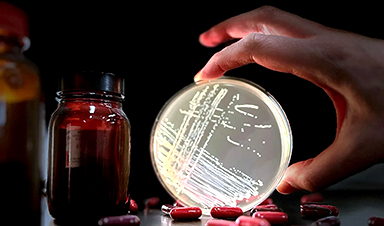A novel study published in the journal, Foods, describes edible nanoparticle-based antibacterial agents to control foodborne diseases.
This research comprises a ternary nanoparticle with two active ingredients and a carrier material that was prepared from rosemary essential oil, nisin and Lycium barbarum polysaccharides.
Using Edible Nanoparticles
Interestingly, the use of functional nanoparticles with food-grade biological macromolecules including protein and polysaccharides has become a popular research area for novel food additives.
This is due to these molecules consisting of components that have a large surface area, a simple preparation process as well as having a flexible structure.
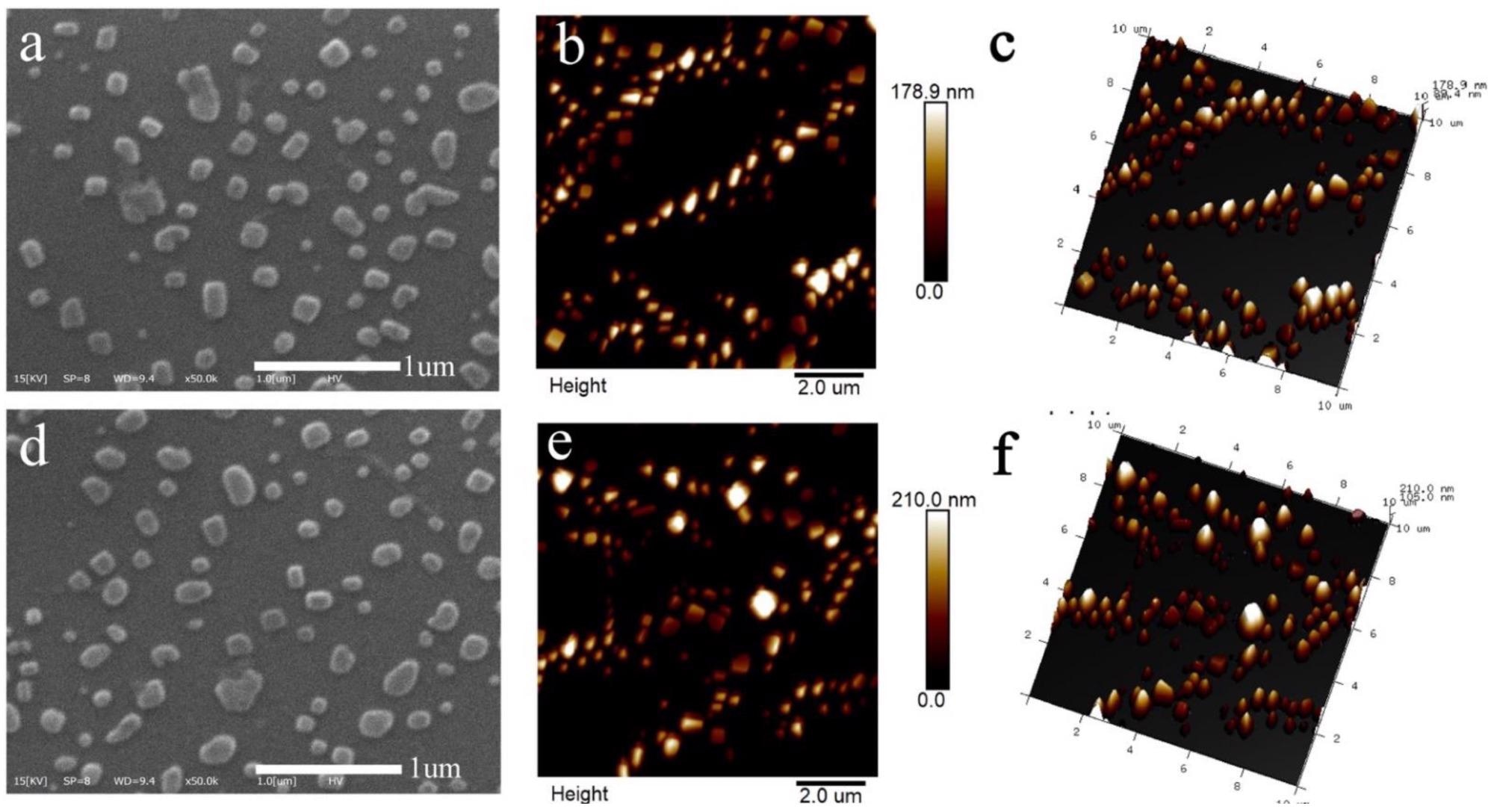
Figure 1. The morphology of nanoparticles including SEM-micrographs and surface, 3-Dimensional AFM images of RNNP (a–c) and TNP (d–f). © Lin, L., Luo, C., Li, C., Chen, X. and Cui, H., (2022)
This is especially significant for the application against foodborne diseases that can be attributed to pathogenic microorganism contamination, resulting in high mortality and morbidity on a global scale.
These pathogenic microorganisms that can infect food and result in severe infections in humans mainly consist of, Staphylococcus aureus, Salmonella, Listeria monocytogenes and Escherichia coli.
The World Health Organization (WHO) has reported 600 million foodborne disease occurrences on an annual basis with more than approximately 420,000 lives lost, illustrating the significance in this area of research to reduce and prevent foodborne diseases.
Previous research on this food health crisis includes novel antibacterial strategies, including the development of new packaging and coating materials that consist of natural antibacterial agents.
Incorporating nanotechnology has furthered this research area through the use of biomaterials and nanocarrier technology via nanoparticles, nanoemulsions, nanohydrogels, and nanoliposomes.
For example, metal oxide nanoparticles have been synthesized as intelligent food packaging; findings indicated increased antibacterial activity.
Ternary Nanoparticle Research
The novel advancement in this field has now encompassed the use of ternary nanoparticles (TNP) comprising two active ingredients and a carrier material prepared from rosemary essential oil (REO), nisin and Lycium barbarum polysaccharides (LBP).
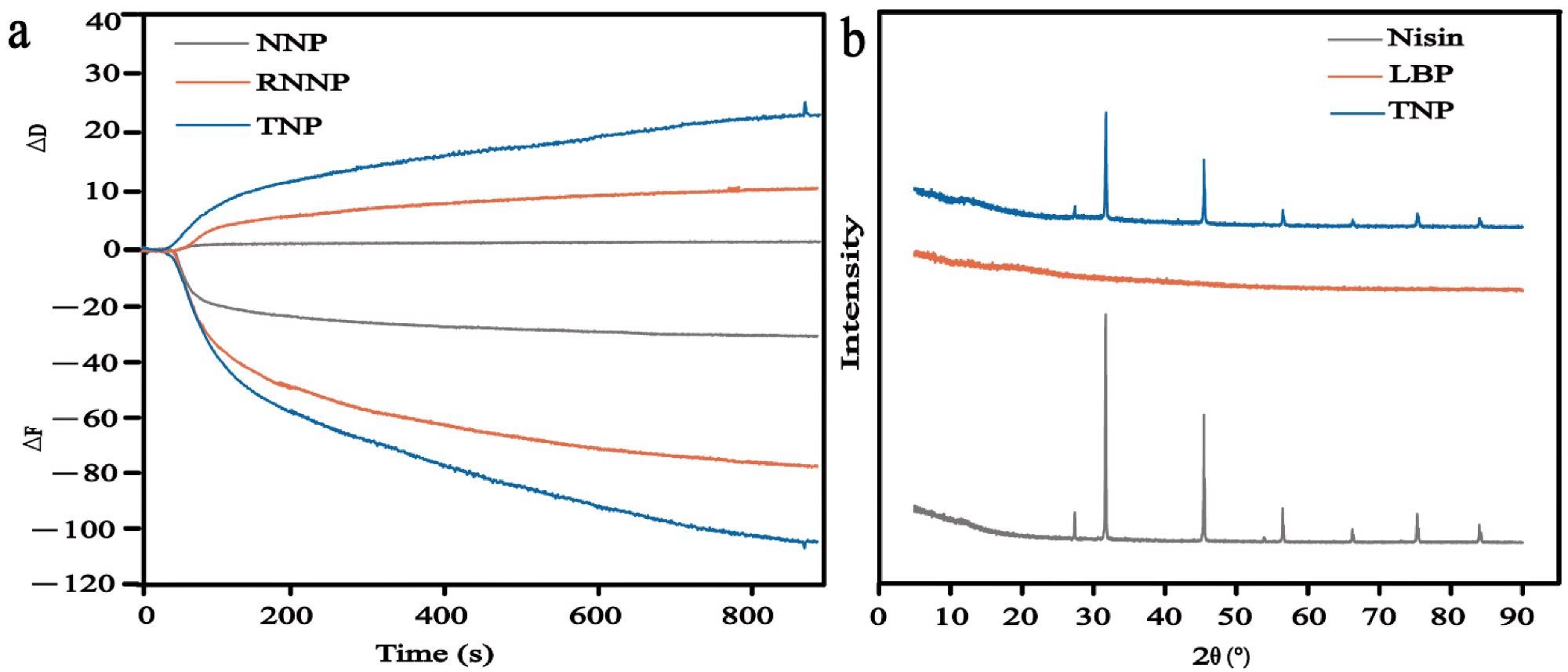
Figure 2. QCM of NNP, RNNP and TNP (a); XRD of Nisin, LBP and TNP(b). © Lin, L., Luo, C., Li, C., Chen, X. and Cui, H., (2022)
Rosemary essential oil was utilized in this research study as the main active ingredient, due to its high antibacterial and antioxidant effects.
These properties have illustrated the potential of REO to be used as an alternative ‘green’ antibacterial agent within food preservation and safety as a method to inhibit foodborne pathogens.
Additionally, the use of nisin as an active ingredient can also enhance the antibacterial and antioxidant activity within food as well as having the role of encapsulating REO due to its peptide-based material that can be used to form nanoparticles.
However, due to being easily degradable by enzymes within food ingredients, nisin can be combined with biopolymers or by incorporated into nisin-loaded nanoparticles.
The potential of LBP for use as a stabilizer for REO and nisin can increase the stability and efficiency of this effective combination of active ingredients.
The novelty of this research can be found in the dual ability of these nanoparticles to improve both the antibacterial and antioxidant effects within beef but also have thermal and storage stability within this food application.
The results of this research study included a reduction in in vitro populations of S. aureus and E.coli when treated with TNP compared to the control group.
The use of TNP as an antibacterial agent on beef was also found to have positive results with favorable preservation effects as well as a lack of change in color or texture, illustrating its potential for use in real-world applications.
Translatory Significance
The high encapsulation efficiency and stability of this ternary nanoparticle combination with multiple ingredients were able to demonstrate how protein nanoparticle instability can be improved.
Additionally, it also illustrated a novel strategy of addressing foodborne pathogens and the use of ‘green’ alternatives to increase the antibacterial and antioxidant activity and reduce bacteria populations.
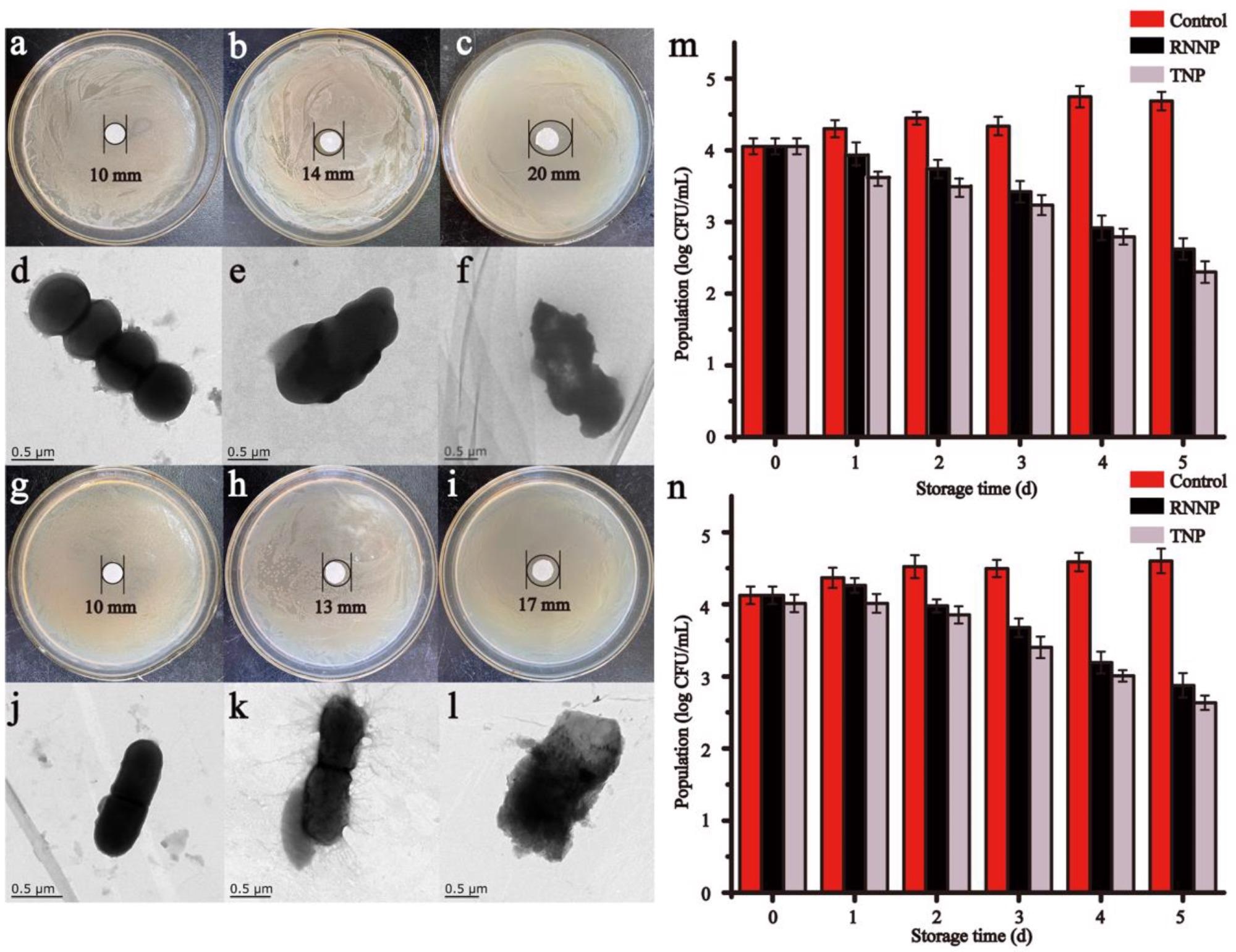
Figure 3. The antibacterial effect of nanoparticles including the inhibition zones, TEM and time-kill curve of control, RNNP and TNP on S. aureus (a–f,m) and E. coli O157:H7 (g–l,n). © Lin, L., Luo, C., Li, C., Chen, X. and Cui, H., (2022)
If translated, the significance of this research could help in reducing the number of infections from pathogenic microorganism contamination, aiding a reduction in overall levels of mortality and morbidity.
This is especially critical on a global scale with less economically developed countries that are more likely to harbor pathogenic contamination, and less likely to have access to medical care.
The use of ternary nanoparticles within the food industry may have the potential to aid with food preservation and reduction in pathogens, not only for beef but for all types of food, further reducing the likelihood of foodborne diseases from pathogenic contamination.
News
Millions May Have Long COVID – So Why Can’t They Get Diagnosed?
Millions of people in England may be living with Long Covid without even realizing it. A large-scale analysis found that nearly 10% suspect they might have the condition but remain uncertain, often due to [...]
Researchers Reveal What Happens to Your Brain When You Don’t Get Enough Sleep
What if poor sleep was doing more than just making you tired? Researchers have discovered that disrupted sleep in older adults interferes with the brain’s ability to clean out waste, leading to memory problems [...]
How to prevent chronic inflammation from zombie-like cells that accumulate with age
In humans and other multicellular organisms, cells multiply. This defining feature allows embryos to grow into adulthood, and enables the healing of the many bumps, bruises and scrapes along the way. Certain factors can [...]
Breakthrough for long Covid patients who lost sense of smell
A breakthrough nasal surgery has restored the sense of smell for a dozen long Covid patients. Experts at University College London Hospitals NHS Foundation Trust successfully employed a technique typically used for correcting blocked nasal passages, [...]
Scientists Invent Plastic That Can Dissolve In Seawater In Just A Few Hours
Plastic waste and pollution in the sea have been among the most serious environmental problems for decades, causing immense damage to marine life and ecosystems. However, a breakthrough discovery may offer a game-changing solution. [...]
Muscles from the 3D printer
Swiss researchers have developed a method for printing artificial muscles out of silicone. In the future, these could be used on both humans and robots. Swiss researchers have succeeded in printing artificial muscles out [...]
Beneficial genetic changes observed in regular blood donors
Researchers at the Francis Crick Institute have identified genetic changes in blood stem cells from frequent blood donors that support the production of new, non-cancerous cells. Understanding the differences in the mutations that accumulate [...]
Shocking Amounts of Microplastics in the Brain – It Could Be Increasing Our Risk of Dementia
The brain has higher concentrations of plastic particles compared to other organs, with increased levels found in dementia patients. In a comprehensive commentary published in Brain Medicine, researchers highlight alarming new evidence of microplastic accumulation [...]
Baffling Scientists for Centuries: New Study Unravels Mystery of Static Electricity
ISTA physicists demonstrate that contact electrification depends on the contact history of materials. For centuries, static electricity has intrigued and perplexed scientists. Now, researchers from the Waitukaitis group at the Institute of Science and [...]
Tumor “Stickiness” – Scientists Develop Potential New Way To Predict Cancer’s Spread
UC San Diego researchers have developed a device that predicts breast cancer aggressiveness by measuring tumor cell adhesion. Weakly adherent cells indicate a higher risk of metastasis, especially in early-stage DCIS. This innovation could [...]
Scientists Just Watched Atoms Move for the First Time Using AI
Scientists have developed a groundbreaking AI-driven technique that reveals the hidden movements of nanoparticles, essential in materials science, pharmaceuticals, and electronics. By integrating artificial intelligence with electron microscopy, researchers can now visualize atomic-level changes that were [...]
Scientists Sound Alarm: “Safe” Antibiotic Has Led to an Almost Untreatable Superbug
A recent study reveals that an antibiotic used for liver disease patients may increase their risk of contracting a dangerous superbug. An international team of researchers has discovered that rifaximin, a commonly prescribed antibiotic [...]
Scientists Discover Natural Compound That Stops Cancer Progression
A discovery led by OHSU was made possible by years of study conducted by University of Portland undergraduates. Scientists have discovered a natural compound that can halt a key process involved in the progression [...]
Scientists Just Discovered an RNA That Repairs DNA Damage – And It’s a Game-Changer
Our DNA is constantly under threat — from cell division errors to external factors like sunlight and smoking. Fortunately, cells have intricate repair mechanisms to counteract this damage. Scientists have uncovered a surprising role played by [...]
What Scientists Just Discovered About COVID-19’s Hidden Death Toll
COVID-19 didn’t just claim lives directly—it reshaped mortality patterns worldwide. A major international study found that life expectancy plummeted across most of the 24 analyzed countries, with additional deaths from cardiovascular disease, substance abuse, and mental [...]
Self-Propelled Nanoparticles Improve Immunotherapy for Non-Invasive Bladder Cancer
A study led by Pohang University of Science and Technology (POSTECH) and the Institute for Bioengineering of Catalonia (IBEC) in South Korea details the creation of urea-powered nanomotors that enhance immunotherapy for bladder cancer. The nanomotors [...]
